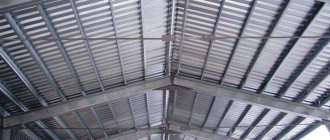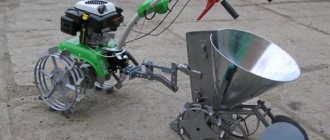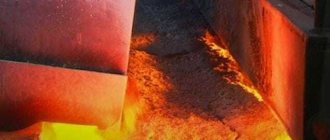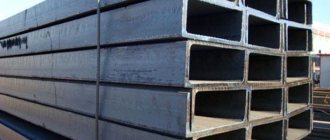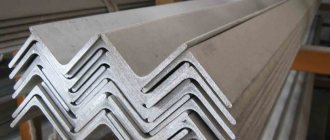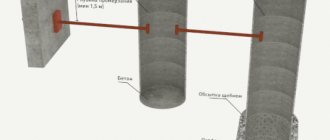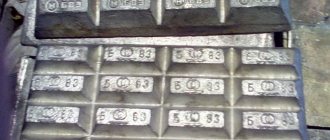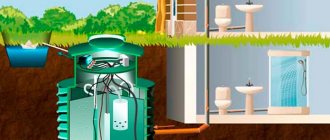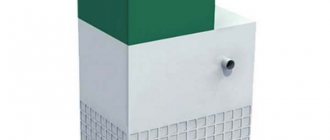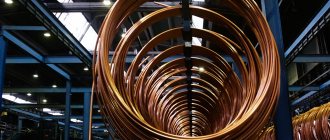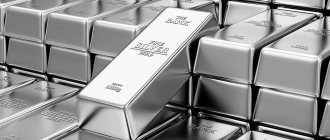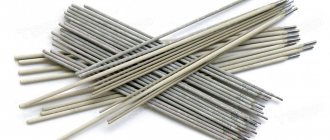Original German autobuffers Power Guard
Mirror-video recorder FUGICAR FC8
Sun blinds Trokot with magnets!!!
Copper grease is an innovative composition that has a number of valuable advantages over other lubricants, used both in production and in car services, and at home, and for self-care of cars.
We will analyze the properties of copper grease, tell you about its types, properties, use, and give advice on how to choose the right type of copper-containing material for your tasks.
Properties
The characteristics of each lubricant depend mainly on the dispersion index of the copper component, the consistency of the material and the types of additives included in its composition.
Properties of copper-containing lubricants:
- protect surfaces in the maximum temperature range - from -50 to +1400 °C;
- applicable for all common metals and alloys;
- do not provide for replacement for a long time;
- Can be applied under high pressure;
- protect surfaces from the harmful effects of water and aggressive chemical-containing liquids;
- do not contain lead, which allows them to lubricate threaded fasteners.
Copper lubricants minimize friction, noise and vibration while providing good electrical conductivity and a hydrophobic effect.
At temperatures above 1000 °C, the heated oil from the material containing copper particles evaporates, burns out, and the powder acts as a solid lubricant.
It effectively prevents the formation of scuffing due to friction, grips threads, and protects components and parts from aggressive environments. Provides protection against premature surface wear when applied to aluminum, nickel, alloys of ferrous and non-ferrous metals.
Application of lubricant
Copper greases have a wide range of applications. Each lubricant has specific performance characteristics and capabilities. This type of product is most common in the following areas:
- Automotive industry;
- Foundry;
- metallurgy;
- oil refining;
- vehicle maintenance and repair;
- household use;
- maintenance of conveyor belts at enterprises;
- care of machines and various mechanisms.
Experts decide which lubricant is best suited in each specific case. You can find different forms of lubricant product on sale.
Kinds
Copper-containing lubricants are divided into pastes and aerosols, or sprays.
Paste-like compositions cover surfaces with a thicker layer of lubricant compared to aerosols. They are preferably applied to pipeline fittings, electrical terminals, and fasteners when operating at high temperatures.
Sprays effectively prevent fasteners from caking. They lubricate bolted joints and components operating in aggressive, humid environments and particularly dusty conditions.
Recommendations for application
There are many ways to apply lubricant, and they also depend on the form of release of the lubricant composition. However, there are several general recommendations that apply to all types of lubricants:
- Lubricant must be applied after surface preparation. It is necessary to remove dirt, dust, corrosion, moisture and old lubricant, if any remains.
- After application, do not remove all excess completely. Copper grease fills all cracks and holes well, and also gets into chips and other defects, thereby improving the connection.
- Copper grease in paste form is convenient to apply with a piece of rag or brush.
- It is not recommended to apply a copper composition to aluminum parts, since copper and aluminum are a galvanic couple. When two materials are combined, corrosion begins at the junction.
- Copper grease can destroy the zinc coating. This does not happen immediately, but the process is irreversible.
Application
All kinds of connections and fasteners are treated with copper lubricants:
- in metallurgy - for coating low-speed components operating at high temperatures;
- in the foundry industry - for fastening elements of molds;
- in the petrochemical and oil and gas industries - for lubricating threads and other connections in tools intended for production.
Lubricants with copper powder have gained the greatest popularity in car service organizations and garages for car maintenance as the best means of lubricating threaded connections. The application of copper-containing lubricants prevents boiling and greatly simplifies the installation and dismantling of bolts, studs, nuts, excluding damage to the turns that is not dependent on human factors.
If you apply paste with copper powder to the threaded fasteners of diesel engine components, the owner will be able to easily unscrew these components when necessary and put them back in place even after long-term use of the car. Without copper-containing lubricant, on the contrary, this is difficult even after a short operating period.
Due to its heat resistance, copper-containing paste serves as an excellent lubricant for calipers.
Conventional lubricants in the brake system dry out due to high temperatures and quite quickly lead to deterioration of the parts, accelerating their wear. Copper - retain useful properties and protect system elements from jamming, which can lead to an accident, and reduce wear on brake pads.
Copper-containing lubricants have proven to motorists around the world their highest efficiency as anti-squeak materials. It is also useful to use them to lubricate wheel hub bolts. Application to the hub makes tire fitting work easier, guaranteed to protect the surface from corrosion.
Reviews
“Copper grease is an indispensable product. I use it almost everywhere. I can say that copper grease makes the life of any person much easier. For example, I apply it to the hubs before installing winter or summer wheels. After this, I don’t have any problems during dismantling, like other motorists. I can say that I don’t have any problems after using the lubricant.”
“If you want to purchase a universal lubricant, then pay attention to copper. I process various threads and connections with it. In addition, I can apply it to metal parts to prevent corrosion.”
Copper grease is a fairly common compound in the automotive industry. It is often used at the factory during the car assembly process, as well as in service centers during repairs. Copper grease, as the name suggests, is made from copper, which has high thermal resistance, which allows it to protect threaded connections from welding, wear, seizing and other defects. Copper grease is also used in other automotive components.
Read also: Landing diameters of saw blades
Advantages
Advantages of lubricants containing copper particles:
- excellent protection from rust;
- withstands high temperatures and high pressure;
- prevent jamming of fasteners and jamming of moving elements of mechanisms;
- extend the service life of parts; do not contain environmentally harmful impurities;
- have a meagerly low evaporation coefficient;
- easily penetrate into the smallest cracks and pores, lubricating absolutely the entire surface;
- suitable for lubricating elements that work in contact with rubber and polyurethane parts;
- have high electrical conductivity.
The latter advantage makes it possible to use lubricants containing copper powder in threaded connections of spark plugs and electric sensors.
Advantages and disadvantages
Copper grease is universal and widely used due to its unique properties. It is suitable for support of heavy machine tools, metallurgical equipment operating at very high temperatures, and for most machine components. Widely used for cars and factories.
Advantages of copper grease over other materials:
- ensures uniform tightening of threads, speeds up assembly;
- makes dismantling easy, prevents sintering of parts;
- increases the time between vehicle servicing;
- increases the service life of threaded connections, increases their reliability;
- reduces vibration and noise;
- used to cover terminals and contacts in electrical components and power equipment;
- reduces friction of parts and increases clutch efficiency;
- protects against wear and corrosion;
- has hydrophobic properties, easily penetrates into all cracks and pores;
- protects rubbing surfaces from seizing, seizing and welding;
- has high adhesion to metals and adheres well to them;
- increases heat resistance;
- has a long service life;
- does not contain nickel and other harmful substances;
- does not allow the formation of oxides and corrosion in aggressive acidic and saline environments.
Read also: Pneumatic bucket for plastering walls
With the exception of bearings, there is no need to remove any remaining grease.
The main disadvantage is that rubber parts cannot be coated with copper grease. In direct contact with copper and oil containing it, the rubber swells and soon breaks down. When lubricating components, you should pay attention to the material of the o-rings, caps and other elements.
Copper grease should be applied in a thin layer using a brush. The metal surface must be cleaned of dirt, grease, oxides and rust. Copper grease only adheres to completely clean and dry surfaces.
Bearings are coated with thick thermal paste in cases where it is necessary when the gearbox and other mechanism operates under high heating conditions. The paste is applied in a thin layer to the track, the bearing is rotated and all excess lubricant is removed. This treatment is only permissible for low-speed roller bearings. It is not recommended to use grease and other viscous compounds, including copper, in high-speed units.
How to choose copper grease
The selection of lubricant is determined by the purposes for which it will be used. First of all, it is necessary to proceed from the temperatures at which the mechanisms operate and to what extent the temperature in the friction area is high.
If copper grease will be applied at operating temperatures of units and machines below -30 ºC, you should purchase a composition made using synthetic oil. Synthetic lubricant should also be preferred for processing parts and assemblies in contact with rubber.
The lubricant that will be applied to rotating parts must have a high oil viscosity. For material applied to static surfaces, this indicator does not play an important role.
The paste has much better application quality compared to an aerosol. But the spray has its own advantages - it is more economical, preferable for application to large surfaces and for treating gaps between components and parts.
For use at an industrial enterprise or in a car service, it is recommended to purchase the paste in cans weighing 3 or 10 kg. For a private person, a tube of 100 or 500 grams is enough for his own car or machine.
Overview of lubricants for calipers and guides
Molykote Cu-7439 Plus
Molykote Cu-7439 Plus . Manufactured in the United States, it is made with fine copper powder and semi-synthetic oil. One of the most popular and currently in demand lubricants for calipers, since its advantages include:
- temperature operating range - -30°С…+600°С;
- pressure resistance;
- extremely low volatility;
- complete lack of washability and solubility.
In addition, Molykote Cu-7439 Plus grease is not only high-temperature , but also perfectly protects brake system elements from corrosion, souring and sticking . Recommended for use by such leading global automakers as Land Rover, Nissan, Honda, Subaru.
Lubricant for calipers MS-1600, comparison with analogues.
Review of Molykote Cu-7439 Plus lubricant
MS-1600
MS-1600 made in Russia. Among domestic products, it is worth highlighting the currently popular lubricant from a number of universal high-temperature pastes. Its operating range is -50°С…+1000°С . Like its analogues, the lubricant is resistant to various reagents, acids, alkalis, and water. In addition, it does not have a detrimental effect on the rubber and plastic parts of the car’s brake system, and has anti-corrosion and non-stick properties. According to the manufacturer's instructions, this white paste is suitable for lubricating the non-working and end surfaces of the pads , guides and processing the caliper piston .
MC-1600 does not interact with brake fluids of classes DOT 3, DOT 4, DOT 5.1. The price of a tube of MC1600 lubricant weighing 100 grams is about $6-8, but it’s convenient that you can buy just a 5-gram sticker, which is enough to replace one set of pads, for only 60-80 rubles.
Please note that MC-1600 cannot be used simultaneously with DOT 5.0 brake fluid
XADO VeryLube
XADO VeryLube . A more budget-friendly option for caliper lubricants. Used to prevent jamming and jamming of brake pads on the caliper guides. Sold as a spray (green), in a 320 ml can. The operating temperature is -35°С…+400°С . Neutral to rubber materials . During operation, it is necessary to apply up to 5 layers of lubricant, allowing each of them to dry. An excellent option for those who do not want to overpay and get a quality product, although the cost is a little more than usual. The price of a can of lubricant is $3…4. The order number for the lithium multi-purpose spray grease Hado VeryLub is XB40019.
SLIPKOTE 220-R DBC
SLIPKOTE 220-R DBC (Silicone Disc Brake Caliper Grease and Noise Suppressor). It is also an excellent lubricant for calipers, and, interestingly, it is also approved for use in drinking water supply systems. According to reviews from many car enthusiasts, this is one of the best pastes for lubricating guides. However, for many, the difficulty lies in purchasing it. The optimal solution is to order from abroad. Temperature operating range - -46 to +299°C . It is made on the basis of purified synthetic oil, thickener and additives, which give it anti-corrosion, anti-oxidation and anti-wear properties.
The manufacturer supplies lubricants under the SLIPKOTE brand to automobile factories. Products are sold in retail by Pennzoil, Loctite, Permatex, TRW Autospecialty, and Toyota. According to the catalog, for ordering, it goes as HUSKEY 72983 or, if Toyota, then 0888780609. With all the advantages of the lubricant, it has the only drawback - the high price. One tube weighing 85 grams will cost you approximately $20.
Note! On a vehicle with drum brakes, SLIPKOTE 220-R DBC cannot be used. In this case, you can use, for example, Huskey 2000 Anti-Seize.
LIQUI MOLY Bremsen-Anti-Quietsch-Paste
LIQUI MOLY Bremsen-Anti-Quietsch-Paste , we do NOT recommend you use this lubricant. Despite the temperature characteristics declared by the manufacturer - -40°C...+1200°C, it has a number of disadvantages. The fact is that initially it was really positioned as a lubricant for caliper guides. However, after some time, consumers began to have problems caused by its operation. And the manufacturer decided to downgrade its status to anti-creaking . Even on the official website there is information that “It is not recommended to use it to lubricate caliper guide pins and seals in anthers.” However, at present, many online stores and unscrupulous sellers, unknowingly or on purpose, continue to sell it as a lubricant for calipers. But this does not mean that Liqui Moli does not have a good lubricant for calipers; other models have proven themselves quite well.
Copper pastes
The specific properties of copper pastes may vary, but in general they are characterized by:
- Stability at low and very high temperatures;
- Anti-wear and anti-friction properties;
- Excellent adhesive properties;
- Anti-corrosion effect;
- Stable to liquids.
Copper pastes prevent jamming and seizing of threaded connections, promote surface separation, and minimize the oxidation process of bimetallic pairs. The paste-like consistency is electrically conductive and allows you to process detailed pairs with a gap and carry out point and contour application of the product.
Copper pastes have found wide application in the repair and maintenance of components, parts and mechanisms operating under harsh operating conditions and under systemic exposure to high temperatures. They are used to process:
- Spark plug;
- Landing saddles for sliding sleeves and shafts;
- Brake pads and disc brake calipers;
- Elements of the exhaust gas exhaust system for automobiles and motorcycles;
- Assemblies of lever and hydraulic mechanisms;
- Threaded and plug connections;
- Pins, flanges, axle shafts with drum brakes;
- Wheel bolts and chassis parts;
- Pipeline parts.
Copper pastes are not squeezed out by high pressure, centrifugal forces and wind loads. Using them, you can significantly facilitate the process of dismantling and disassembling structural units, eliminate the possibility of soldering and coking of contact surfaces, and therefore minimize emergency breakdowns and extend the service life of parts and units.
